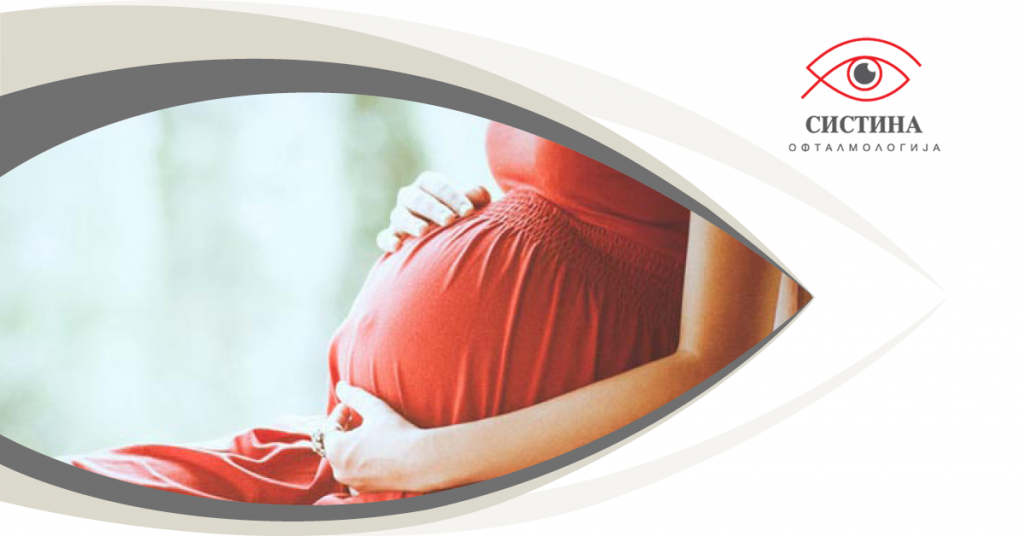
Changes in the eyes and visual function occur in 15% of all pregnant women. During pregnancy, hormonal changes, changes in metabolism, fluid retention, and changes in blood circulation can affect the eyes and visual function.
Ocular manifestations of pregnancy can be grouped into 3 categories:
PHYSIOLOGICAL CHANGES
Corneal changes: Physiological changes in the cornea (lat. Cornea) most commonly occur due to fluid retention and include decreased corneal tenderness, increased corneal thickness, and curvature. Such changes usually occur in the third trimester and cause a temporary change in diopter.
This is one of the reasons why laser diopter correction is not done in pregnant women, the glasses are not changed and new contact lenses are not fitted. The changes are temporary and disappear in the first few months after delivery.
Dryness and irritation: Your eyes may be dry and irritated during pregnancy and breastfeeding and may cause discomfort if you wear contact lenses.
IOP Variations: Especially in the second half of pregnancy IOP (intraocular pressure) may decrease in healthy eyes. In patients with glaucoma and ocular hypertension, the reduction may be even greater.
EYE DISEASES SPECIFIC FOR PREGNANCY
Preeclampsia and eclampsia: Visible symptoms occur in 25-50% of preeclamptic patients. Symptoms include blurred or diminished vision, photopsies, scotomas, diplopias, visual field defects. This is due to constriction or spasm of the blood vessels in the retina and reduced blood flow from the arteriolite to the veins. If the condition worsens, retinal bleeding, retinal edema, and exudates may occur.
Central serous chorioretinopathy: It can occur in some women who have a normal pregnancy. It is a condition where fluid collects under the retina and in the area of the yellow spot. Then the layers of the retina come off and cause a distorted image and blind spots or scotomas.
This condition is associated with stress hormones usually in late pregnancy. All symptoms disappear and vision returns to normal a few months after delivery.
MODIFICATION OF ALREADY EXISTING DISEASES
Pregnancy can improve or worsen pre-existing eye diseases.
Diabetic retinopathy: If you have type 1 or type 2 diabetes, this condition can unfortunately get worse during pregnancy. If you have eye symptoms of blurred vision, reduced vision, distortion of the images, call your ophthalmologist immediately. Mothers with diabetes should see an ophthalmologist more often during pregnancy and have good control of blood glycemia.
Glaucoma: If you have glaucoma, it may improve during pregnancy, i.e. due to reduced IOP, your ophthalmologist may need to reduce the dose of your therapy.
Do I need to tell my doctor if I have vision changes?
YES! Contact your doctor immediately whenever you experience these symptoms:
- Scotomas;
- Duplicate pictures;
- Blurred vision;
- Temporary loss of vision;
- Flashes or lightning in the field of view.
Sometimes, even the slightest eye changes and symptoms can be a sign of life-threatening diseases during pregnancy such as high blood pressure, preeclampsia and eclampsia, and their timely detection is important.
Tip for initial examination and / or diagnosis
in case you have the same or similar condition:
Ophthalmic examination
Refraction, visual acuity measurement, eye pressure measurement – examination of anterior segment.
1.000,00
Detailed eye examination
Refraction, visual acuity measurement, eye pressure measurement, evaluation of posterior segment – examination of anterior and posterior segment.
